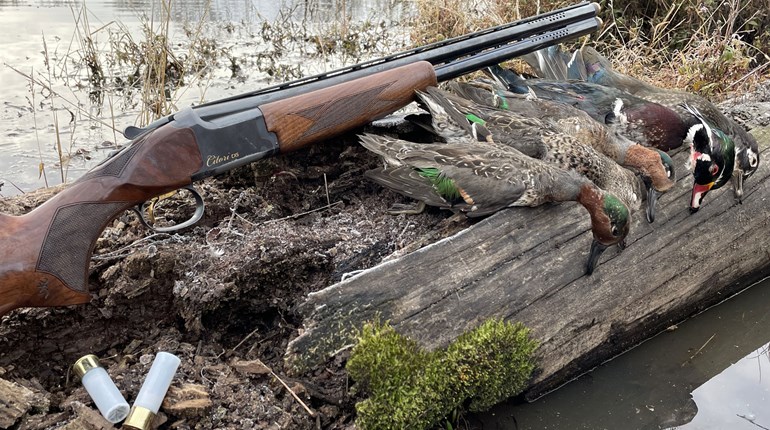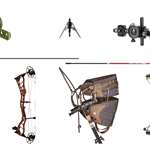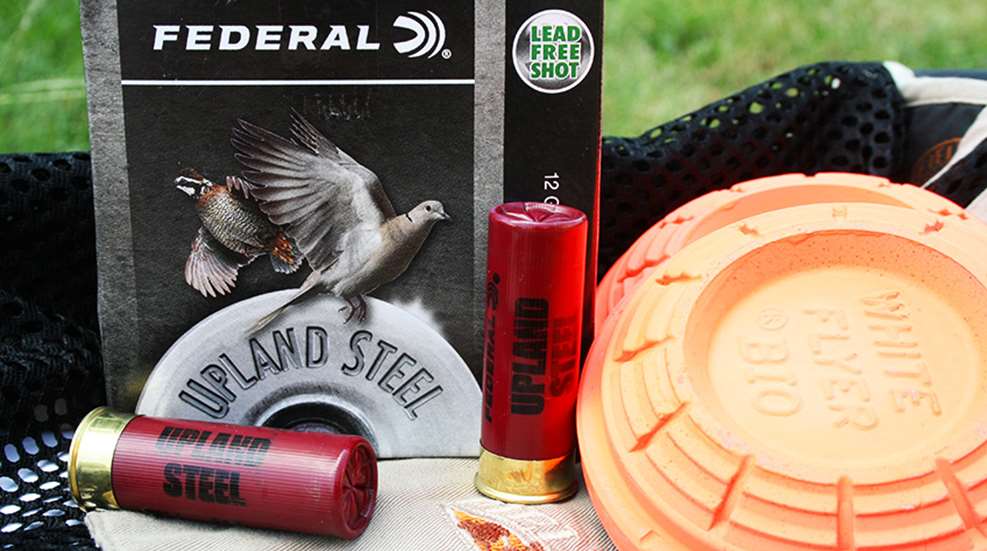
For small-game hunting and breaking clays, lead shot—especially when plated with copper and/or nickel—is tough to beat. At 11.35 grams/cc, lead’s density, along with its malleability, enables it to impart significant energy on distant targets. Its “softness,” relatively speaking, is also gentle on the bores and chokes of older and high-end shotguns. But, the aforementioned qualities are often negated due to lead’s single drawback—toxicity.
Due to lead’s short- and long-term harmfulness to people and nature, hunting hotspots, ranges and clays courses are increasingly prohibiting its use. Problem is, the few non-lead shotshells that are affordable enough to be consumed in volume have been in short supply and insufficiently diverse, and those that fulfill the niche are often anemically loaded. Federal sought to help rectify the situation with its new Upland Steel loads.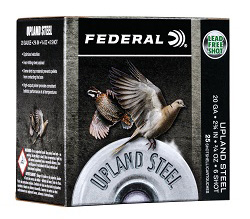
Considering cost and ballistics, steel is the best substitute for lead. No other non-toxic, shot-making material can be expended in volume economically. And, as waterfowlers are keenly aware, steel hits hard, too; it’s safe to assume that more waterfowl are taken annually with steel shot than any other non-lead pellet type. However, its low density—7.8 grams/cc—requires that it be propelled to high velocities to carry lethal energy and penetration downrange. This is well understood, thanks to earlier inadequacies of steel waterfowl ammunition.
It’s apparent that Federal’s engineers understood the need to balance velocity and payload when designing Upland Steel. For instance, the 12-gauge, 2¾-inch loads propel 1⅛ ounces—a traditional weight in lead, 12-gauge upland and target shells—of No. 6 or 7½ steel shot to 1400 fps. The 20-gauge, 2¾-inch offerings, however, drive a ¾ ounce of No. 6 or 7½ shot to 1500 fps. Both provide ample speed to break clays or down distant slight feathered or furred game.
Federal’s choice of shot sizes represents a departure from the norm. Here’s why: No. 7 or No. 6 shot have customarily filled the hulls of steel game and target loads. While Federal does offer No. 6 shot, it also uniquely loads No. 7½. The latter is significant for two reasons: first, the smaller shot size increases the pellet count, which is helpful on smaller, fast-moving birds such as dove and quail. Secondly, many clays courses require shot sizes to be no larger than No. 7½, regardless of shot material, so these will meet the requirement. The payload and shot sizes also fall within the parameters of the National Sporting Clay Association (NSCA) for registered tournaments, so Upland Steel shells offer great utility.
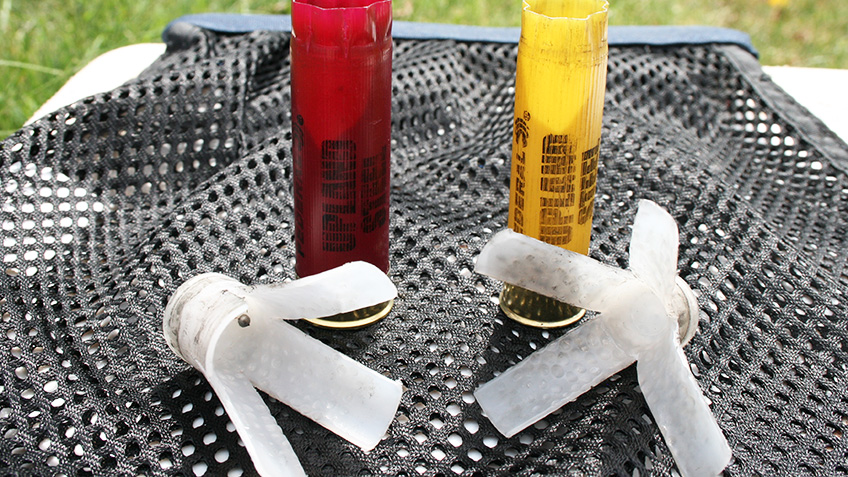
Because of steel’s low density, there are more pellets per ounce than with lead. As an example, 1⅛ ounces of No. 6 steel shot contains about 351 pellets, while the same weight in magnum (higher antimony content) lead shot is 253. That’s a noteworthy gain; but the steel pellets lose their energy faster, so they must be propelled faster (which Federal does), and shots must be kept closer. The extra, non-deforming pellets can be especially beneficial on the sporting clays field—particularly hard-to-break rabbit targets.
Steel’s hardness—at times, more so than the barrel it’s fired through—required that Federal utilize rigid, durable one-piece wads. They have four uniform petals and are absent of a crush section. Using a Hornady caliper, the thickness of the 12-gauge wad tapers from .070-inch at the beginning of the cuts to .035-inch at the tip of the petals. These are among the stoutest wads I’ve encountered and will aid in preventing pellets from contacting the barrel.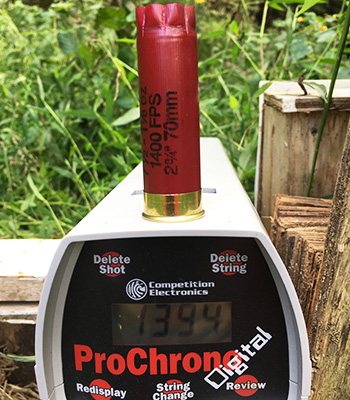
Federal sent samples of Upland Steel in 12-gauge, 2¾-inch No. 7½ shot and 20-gauge, 2¾-inch No. 6 and 7½ for testing. First up was chronographing the loads. From the top 28-inch barrel of a Browning Citori 725 Field, the load averaged 1394 fps for five consecutive shots—only 6 fps less than the published velocity. The standard deviation was 21, and the extreme spread was 58. Unlike the 12-gauge load, at 1423 fps, the No. 7½ 20-gauge offering fell noticeably short of its advertised velocity of 1500 fps. That could be partly due to the 26-inch barrel of the Benelli M2. Nevertheless, both loads achieved admirable—and hard-hitting—velocities. With chronographing complete, I next moved to patterning, which would illustrate pattern fullness and choke responsiveness.
I quickly amassed a collection of patterns fired from 40 yards using extended, improved cylinder, skeet 2 (light modified), and modified Trulock Precision Hunter Invector DS chokes in the Browning. As expected, the modified choke delivered the “tightest” patterns, but the most even distribution came with the improved cylinder choke. Sure, there were a few holes in the patterns (there usually are), but a dove, quail or clay target would have had great difficulty navigating the shot cloud without taking a hit. Those extra pellets fill the pattern nicely. Similarly, I patterned the 20-gauge No. 6 load in the M2 using factory-supplied Crio Plus tubes in improved cylinder and modified constrictions and found it to deliver dense patterns at 40 yards. Talk about perfect for squirrels and rabbits.
Before heading to the field in search of game, I spent some time honing my skills on hand-thrown biodegradable clays, which are renowned for their durability over the older style. There was no obvious difference in the breaks that the Upland Steel delivered over those caused by lead loads. That’s great news for clays shooters who cannot utilize lead. I experienced no failures of any type in the Browning or the Benelli.
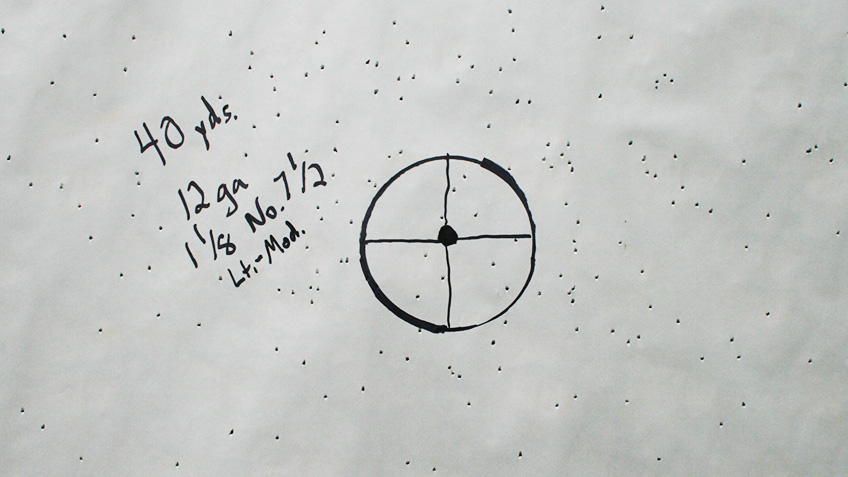
Next, I headed to the field in search of doves. Unfortunately, they proved to be elusive; however, squirrel season opened that day, so I headed to the nearest stand of hickory trees and found gray squirrels steadily cutting and eating the early-season delight. Before darkness set in, I had collected a trio of bushy tails for dinner with three Upland Steel shells. The closest shot was about 30 yards, while the furthest stretched it a bit—probably around 40 yards or so. In each case, the squirrel fell to the ground motionless. It was clear than Upland Steel hits with authority.
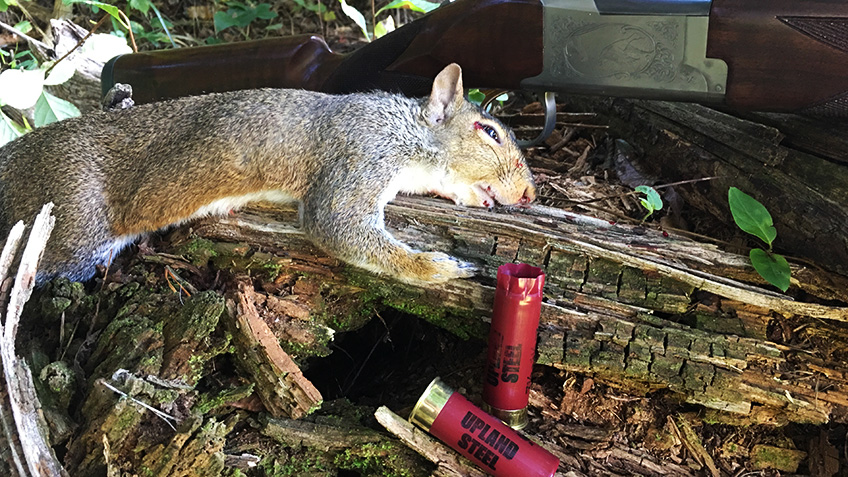
After testing Upland Steel extensively, I only found one complaint about it—it’s bizarrely dirty. I quickly noticed this after a single shot through the Browning over/under. To see if it was a fluke, I scrubbed the barrels to a shine, then fired one Upland Steel shell through the top barrel and a competitor’s load in the bottom. The difference was eye opening; the competitor’s shell left minimal fouling, but that from Upland Steel was extremely noticeable. While of little concern to the over/under, side-by-side, single-shot or pump-action user, the hunter who has a gas-operated, semi-automatic shotgun will likely have to clean his or her gun more frequently. Would it prevent me from purchasing Upland Steel? Not at all; the benefits outweigh that drawback.
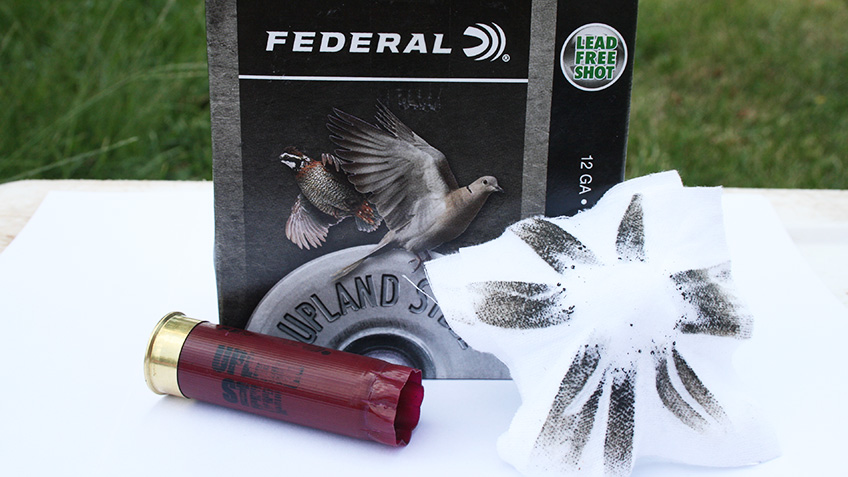
Twenty-five-round boxes of Upland Steel have a suggested retail price of $9.95 for the 12-gauge loads, while the 20-gauge shells run a dollar cheaper, though I’ve seen them for far less on store shelves.
It’s obvious that Federal did its homework when creating Upland Steel. For their intended purposes, the loads sacrifice nothing to those loaded with lead; therefore, they’re an excellent choice for pursuers of small game and clays breakers where the traditional shot-making material is banned.














